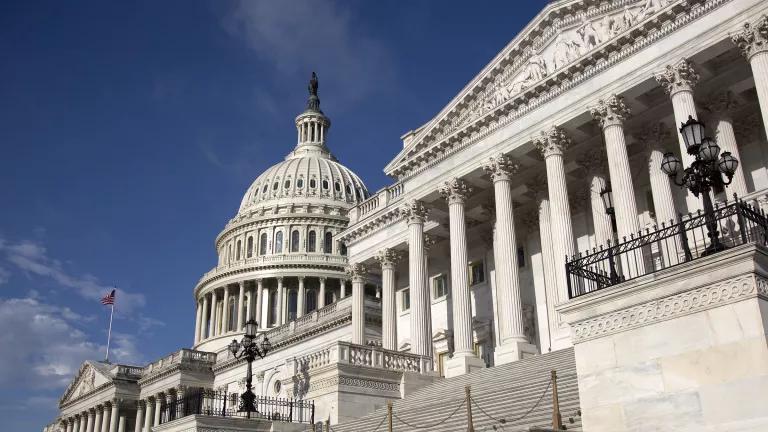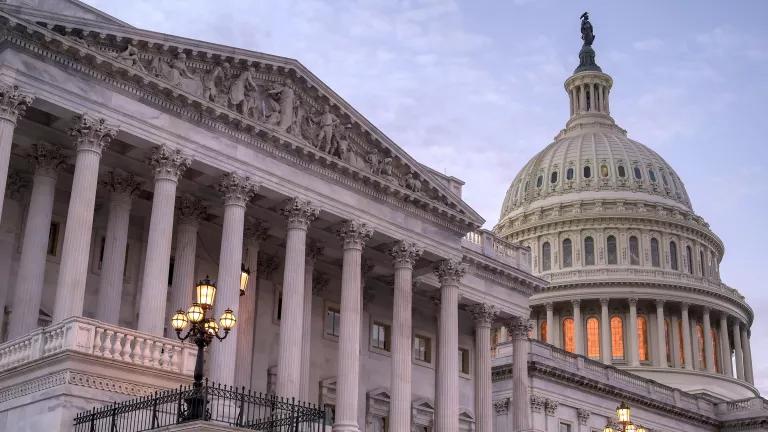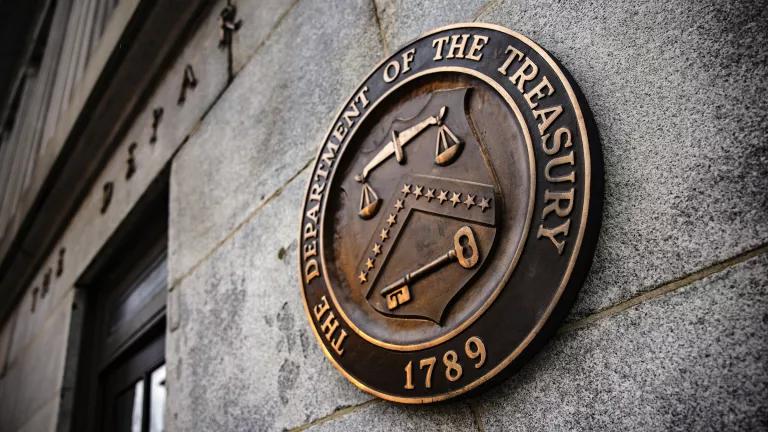Henry Henderson (1952–2018)

Remembering the achievements of a tireless champion of environmental justice and public health.
NRDC is greatly saddened to report that Henry Henderson, the organization’s longtime Midwest director, passed away on Monday, November 5, at his home in Evanston, Illinois, after a lengthy illness.
Henry’s work advocating for cleaner air, cleaner water, and climate action, especially on behalf of communities that have suffered environmental injustice, is a legacy that will be regarded for decades to come as foundational to the safeguarding of public health in his hometown of Chicago and the greater Midwest. Rhea Suh, NRDC’s president, worked with Henry on many projects, including one initiative—forged in the wake of the Flint, Michigan, water crisis—that focused on access to safe drinking water as a basic human right. With his passing, she noted, Chicago and the Great Lakes region have lost one of their most ardent champions of the right of all citizens to live free from toxic exposure.
“Henry worked to promote the strongest public health and environmental standards,” Suh said. “But where he was truly a leader was in ensuring that those standards were applied equally and fairly to all communities. He used to say our environmental work was fundamentally about the pursuit of justice—in particular, the reconciliation of injustices. Henry pioneered this basic, decent, essential vision: that our fight is really the fight for the dignity of all people.”
On learning of Henry’s death, Chicago Mayor Rahm Emanuel issued a statement observing that Henry had “devoted his professional life in service to the protection of Chicago and the Great Lakes’ natural habitat . . . His decade of work at the Natural Resources Defense Council was spent holding polluters, governments, and, yes, even City Hall, to improve the air and water around us. Chicagoans and all Midwesterners owe a debt of gratitude to Henry for his leadership and service.”

Before joining NRDC in 2007, Henry served as Illinois’ assistant attorney general and later as the founding commissioner for the Chicago’s Department of the Environment. “I’ve always been proud of the fact that we were the first big city to create a Department of Environment—and we’re all fortunate that Henry was able to serve so passionately as its first commissioner,” said former Chicago Mayor Richard M. Daley, who picked him for the job in 1992. While there, Henry designed a string of groundbreaking initiatives in pursuit of cleaner air, stronger utility regulations, and a more sensible energy policy. Only one year after taking the job, he oversaw the Chicago Brownfields Initiative, a massive citywide project entailing the rehabilitation of abandoned industrial sites that had been plaguing Chicago for generations.
“He was a great leader during a vital time in Chicago’s history,” said Daley. “Henry proved to be instrumental in the environmental movement here, long before other cities were acknowledging the need for such initiatives.”
Henry’s commitment to making communities healthier—combined with his supreme skill at navigating the daunting labyrinths of local and state politics—made him the logical choice when former NRDC president Frances Beinecke was looking for someone to helm the organization’s newly created Midwest office in 2006. “Henry understood that politics and policies go hand in hand,” said Beinecke. “He was able to engage political consultants early on to help us negotiate the policy minefields and to ensure NRDC had a strategy to build support among elected officials for the policies we sought.”
At NRDC, Henry found the perfect platform for using the law as a tool to redress a disturbing power imbalance between long-neglected citizens who were demanding environmental justice and a government that wasn’t always willing to provide it unless pressure was brought to bear. Under his leadership, the organization launched campaigns to protect residents of Chicago’s Southeast Side from the rampant dumping of toxic chemicals in their communities; to close a pair of highly polluting coal plants that were spewing their emissions into working-class Latino neighborhoods; and to compel ComEd, the largest electric utility in Illinois, to pour half a billion dollars into new efficiency measures for commercial buildings. This last effort sharply reduced Chicago’s carbon footprint, saved $5 million annually in energy costs, and helped pave the way for Illinois’s Future Energy Jobs Act, one of the most aggressive state-led climate efforts in the nation’s history.
U.S. Senator Dick Durbin (D-IL) recalled Henry as a “tireless advocate,” adding that “his dedication to leaving this planet better and cleaner for the next generation will be long remembered. Without Henry and his dogged work at NRDC, we would have never been as successful at addressing the issue of manganese pollution in Southeast Chicago or taking on contamination issues from BP Whiting.” This last reference is to NRDC’s successful efforts, led by Henry and his team, to stop the oil and gas company BP from sending more than two million tons of toxic petcoke waste to a facility in the Southeast Side—located in a dense urban neighborhood, adjacent to homes, parks, and schools.

Others will remember Henry as one of the loudest and most persistent voices calling for the resuscitation of the Chicago River, the iconic waterway that flows from Lake Michigan through the heart of the city and out to the Mississippi River Basin. Under his leadership, NRDC initiated a lawsuit that forced water regulators to stop dumping water rife with human waste into the river—a cleanup effort that precipitated the development of the Chicago Riverwalk, now a jewel in the city’s tourism crown.
To help rally public support behind the Chicago River revival, Henry frequently courted artists, architects, and other cultural figures to contribute to the cause, soliciting their ideas and input. Jeanne Gang, the internationally renowned Chicago-based architect and MacArthur Fellow, was asked by Henry to conceptualize a physical barrier for the river that might stop the progress of invasive carp into Lake Michigan. That relationship led to further joint projects and even a 2011 book, Reverse Effect: Renewing Chicago’s Waterways, that established the infrastructural blueprint for the beautified river as a civic resource to be enjoyed by all.
Gang, whose award-winning work is consistently praised for its rootedness in the principles of sustainability, credits Henry with helping her to cultivate this aspect of her practice. “It was Henry’s support and mentorship that, in many ways, encouraged me to use my design work as a medium to express my love of ecology and address environmental challenges,” she said. “He once told me that he liked architecture because it had the capacity to create positive things for the environment, and that he saw this work as being equally important as that of preventing bad things from happening to the environment—his own forte.”
Outside Chicago, Henry’s leadership helped address significant threats to the Midwest’s air and water quality. He and his staff fought vigorously to prevent construction of nine unneeded coal plants proposed in Michigan and Ohio, and they tilted with tar-sands oil refineries in Illinois and Indiana to force the adoption of hundreds of millions of dollars’ worth of increased pollution controls. More recently, he lent his expertise and support to litigation brought by the residents of Flint, Michigan, to combat the city’s horrific water crisis, litigation that will eventually result in the replacement of every lead line in the city—and finally ensure the transparency of the city’s water quality for members of this long-suffering community.

Fueling Henry’s work at all levels was the unswerving belief that building relationships between people was as essential to the creation of safe, healthy communities as law and public policy were. Unsurprisingly, Henry was committed to forging such relationships himself—mentoring young people, seeking out and finding common ground, and otherwise doing whatever he could to broaden and strengthen his own community of environmental advocates.
Nicole Barker spent six years as the executive director of Save the Dunes, a group that advocates for the protection of the Indiana dunes and their unique ecosystem. Before she held that role, she was a young intern just starting out at Chicago’s Department of the Environment. “Henry made sure to learn my name, recognize me, and ask for my input as I grew in my career in the environmental sector,” Barker said. “He always placed great emphasis on supporting the next generation of conservation leaders, and as a result, he strengthened our movement.”
As deeply as Henry Henderson’s absence will be felt, his presence will be felt even more: in the communities that he fought so hard to protect; in the laws and policies that he helped to draft; in the continuing work of those younger advocates whom he mentored and inspired; and in the realization of his dream of a city ever improving, ever innovating, and ever rededicating itself to promoting equity and justice for all of its citizens.
In lieu of flowers, Henry’s family requests that a donation be made to the Henry L. Henderson Fund for Environmental Protection. Gifts in Henry’s honor will be used to advance the work that he began at NRDC, specifically, his emphasis on urban environmental pollution. This Henderson Fund will be used to help train and educate advocates to improve urban environmental equity, especially in communities that have borne the disproportionate burden of industrial pollution.



